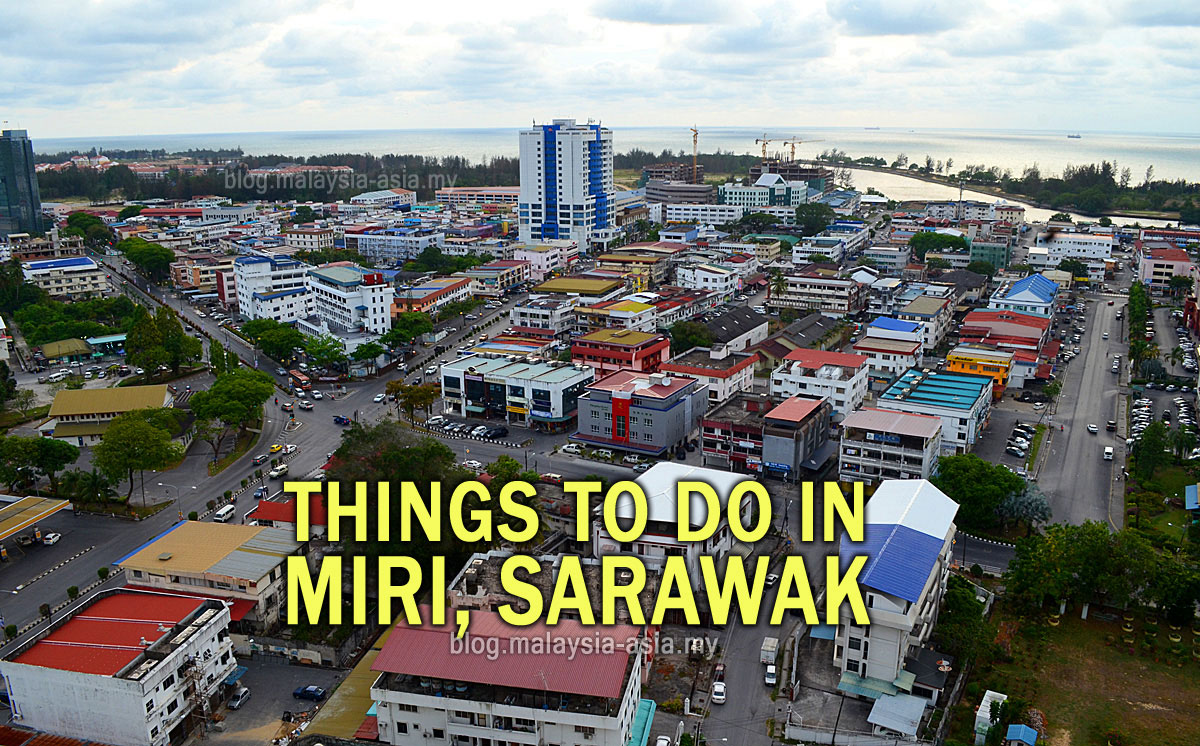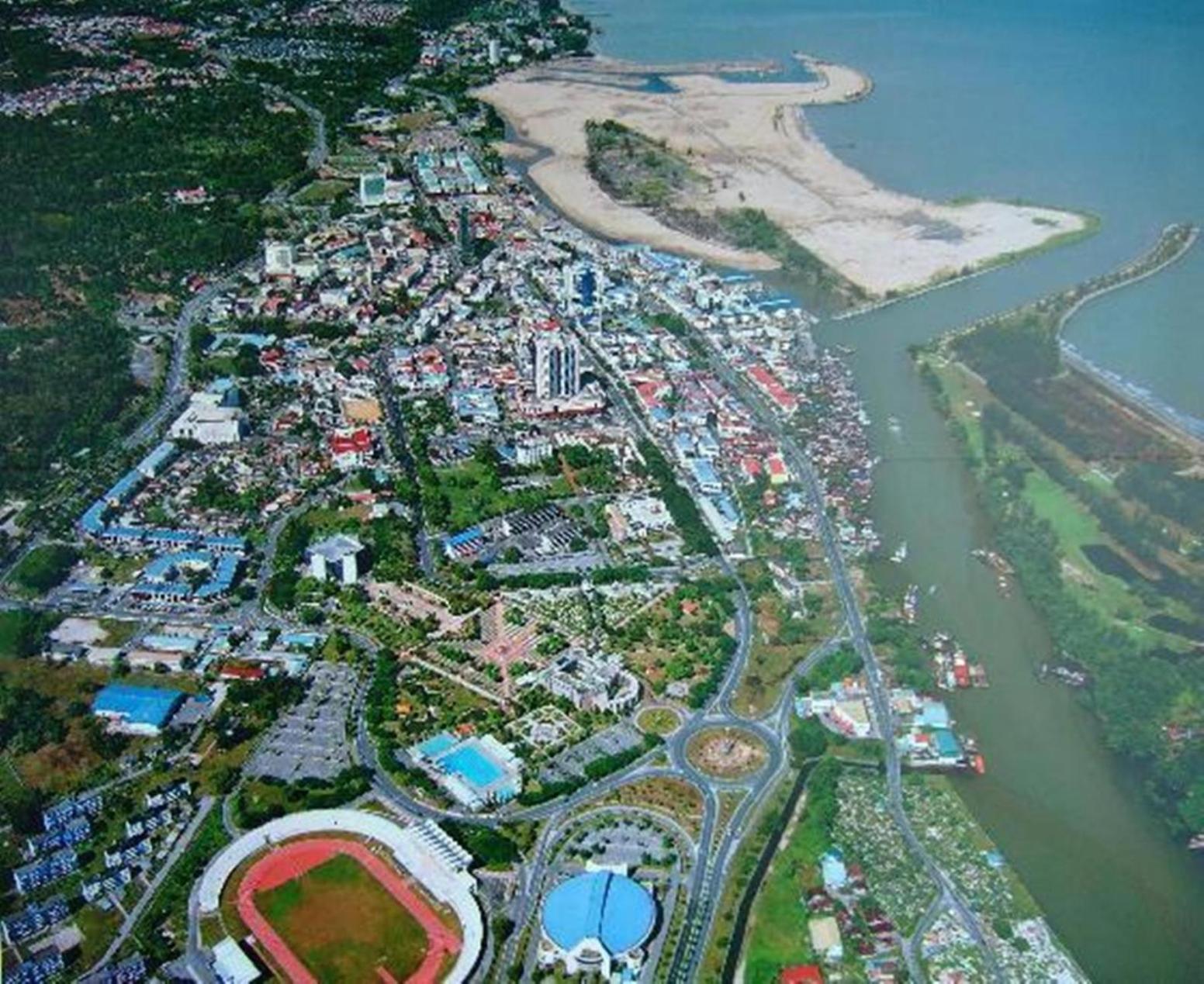Miri has long been a name that resonates with a blend of historical significance, cultural richness, and modern development. Nestled in the heart of Sarawak, Malaysia, Miri stands as a captivating destination that draws attention for its unique amalgamation of natural wonders, vibrant traditions, and economic importance. Known as the "Oil Town" of Malaysia, Miri holds an illustrious past and a promising future, making it a focal point for travelers, historians, and business enthusiasts alike.
From its stunning beaches to its lush rainforests and sprawling national parks, Miri is a haven for nature lovers. But it doesn’t stop there. The city also boasts a rich cultural tapestry, with influences from the indigenous communities that call the region home, as well as from Chinese, Malay, and other ethnic groups. Miri is not just a city; it's an experience—a thriving metropolis that has managed to retain its natural charm while embracing technological advancements and urbanization.
Whether you're exploring its UNESCO World Heritage Sites, indulging in its culinary delights, or immersing yourself in its lively festivals, Miri offers something for everyone. This article aims to provide an in-depth look at everything that makes Miri a must-visit destination. From its rich history and geographical wonders to its modern-day attractions and economic significance, we will cover it all. Let’s dive into the essence of Miri.
Table of Contents
- Miri at a Glance
- What is the Historical Significance of Miri?
- Geography and Natural Wonders of Miri
- How Diverse is the Culture in Miri?
- Economic Importance of Miri
- Top Tourist Attractions in Miri
- Festivals and Events in Miri
- Culinary Scene: What to Eat in Miri?
- How to Get Around Miri?
- Education and Institutions in Miri
- Healthcare Facilities in Miri
- Real Estate and Living in Miri
- What Does the Future Hold for Miri?
- Frequently Asked Questions
- Conclusion
Miri at a Glance
Miri is a coastal city located in northern Sarawak, Malaysia, and serves as the second-largest city in the state. Known for its role as the birthplace of Malaysia's petroleum industry, Miri is often referred to as the "Oil Town." The city has grown significantly over the years, transforming into a bustling urban hub while maintaining its natural and cultural heritage.
Personal Details and Biodata of Miri
| Attribute | Details |
|---|---|
| Location | Northern Sarawak, Malaysia |
| Population | Approximately 350,000 (as of latest census) |
| Known For | Petroleum industry, natural wonders, cultural diversity |
| Main Languages | Malay, English, Mandarin, Indigenous languages |
| Climate | Tropical rainforest climate |
What is the Historical Significance of Miri?
The history of Miri dates back centuries, with its roots entrenched in the activities of indigenous tribes such as the Iban, Bidayuh, and Orang Ulu. However, Miri's modern history gained prominence in 1910 when oil was first discovered by Shell at Canada Hill. This marked the beginning of Malaysia’s petroleum industry, making Miri a pioneer in the field.
The Birth of the Oil Industry
Canada Hill, now a popular tourist destination, was the site of Malaysia’s first oil well, known as the "Grand Old Lady." This discovery not only shaped the economic landscape of Miri but also its identity, earning it the nickname "Oil Town."
Colonial Influence
Under British colonial rule, Miri saw significant infrastructural developments, including the establishment of schools, hospitals, and administrative buildings. The British influence is still evident in some of the city’s architecture.
Post-Independence Growth
After Malaysia gained independence in 1963, Miri continued to flourish, evolving from a small town into a vibrant city. The discovery of offshore oil fields further bolstered its economy, attracting investments and increasing its global significance.
Geography and Natural Wonders of Miri
Miri is strategically located along the coast of northern Sarawak, bordering Brunei to the north. Its geographical positioning offers a unique blend of coastal and inland attractions, making it a paradise for nature enthusiasts.
National Parks and UNESCO Sites
Miri is home to several national parks, including the renowned Gunung Mulu National Park, a UNESCO World Heritage Site. The park is famous for its limestone karst formations, extensive cave systems, and diverse flora and fauna.
Beaches and Coastal Attractions
The city boasts pristine beaches such as Tanjong Lobang and Luak Bay, perfect for relaxation and water sports. These beaches are also popular spots for witnessing breathtaking sunsets.
Rainforests and Biodiversity
Miri’s rainforests are a treasure trove of biodiversity, offering opportunities for eco-tourism and adventure activities like trekking and bird-watching.
How Diverse is the Culture in Miri?
Miri's cultural landscape is as diverse as its natural one. The city is a melting pot of ethnicities, including the Iban, Malay, Chinese, and Orang Ulu, among others. This diversity is reflected in its festivals, food, and daily life.
Traditional Practices
Indigenous communities in Miri have preserved their traditional practices, from weaving and wood carving to music and dance. These traditions are often showcased during cultural festivals.
Modern Influences
While rooted in tradition, Miri has embraced modernity, evident in its urban lifestyle and contemporary art scene. This blend of old and new adds to its unique charm.
Economic Importance of Miri
Miri’s economy is primarily driven by the petroleum and natural gas industries. However, in recent years, the city has diversified its economic activities to include tourism, agriculture, and manufacturing.
Oil and Gas Industry
The discovery of oil in 1910 set the stage for Miri’s economic development. Today, the city remains a key player in Malaysia’s energy sector.
Tourism and Services
Miri’s natural and cultural attractions have made it a popular tourist destination, contributing significantly to its economy.
Agriculture and Aquaculture
The fertile lands surrounding Miri support various agricultural activities, including palm oil plantations and aquaculture farms.
Top Tourist Attractions in Miri
Miri offers a plethora of attractions that cater to all types of travelers. Here are some must-visit spots:
- Gunung Mulu National Park
- Canada Hill and the Grand Old Lady
- Tanjong Lobang Beach
- Niah Caves
- Miri Crocodile Farm
Festivals and Events in Miri
Miri hosts a variety of festivals and events throughout the year, celebrating its cultural diversity and natural beauty. Highlights include:
- Miri May Fest
- Borneo Jazz Festival
- Miri City Day
Culinary Scene: What to Eat in Miri?
Miri’s culinary scene is a reflection of its multicultural population. From traditional Sarawakian dishes to international cuisines, there’s something for everyone.
- Kolok Mee
- Manok Pansoh (Chicken cooked in bamboo)
- Seafood dishes
How to Get Around Miri?
Miri offers various transportation options, including taxis, buses, and ride-sharing services. For those who prefer to explore at their own pace, car rentals are also available.
Education and Institutions in Miri
Miri is home to several educational institutions, ranging from primary schools to universities, including Curtin University Malaysia.
Healthcare Facilities in Miri
Miri boasts a range of healthcare facilities, including public hospitals, private clinics, and specialized medical centers.
Real Estate and Living in Miri
The real estate market in Miri offers a variety of options, from affordable housing to luxury properties, catering to different lifestyles and budgets.
What Does the Future Hold for Miri?
With ongoing developments in infrastructure, tourism, and technology, Miri is poised for a bright future. The city aims to balance modernization with sustainability, ensuring its natural and cultural heritage are preserved.
Frequently Asked Questions
- What is Miri famous for? Miri is best known as the birthplace of Malaysia’s petroleum industry and its natural attractions like Gunung Mulu National Park.
- How can I get to Miri? Miri is accessible by air, road, and sea, with Miri Airport serving as a major gateway.
- What is the best time to visit Miri? The best time to visit Miri is during the dry season, typically from March to October.
- Are there any UNESCO sites in Miri? Yes, Gunung Mulu National Park is a UNESCO World Heritage Site located in Miri.
- What languages are spoken in Miri? Malay and English are widely spoken, along with Mandarin and several indigenous languages.
- Is Miri safe for tourists? Yes, Miri is considered a safe destination for tourists, with friendly locals and a low crime rate.
Conclusion
Miri is a city that beautifully balances its rich history, cultural diversity, and modern advancements. Whether you’re a history buff, nature lover, or foodie, Miri has something to offer. Its strategic location, economic significance, and vibrant lifestyle make it a gem worth exploring. As Miri continues to grow and evolve, it remains a shining example of how tradition and progress can coexist harmoniously. Plan your visit to Miri and experience the magic for yourself!
Article Recommendations

